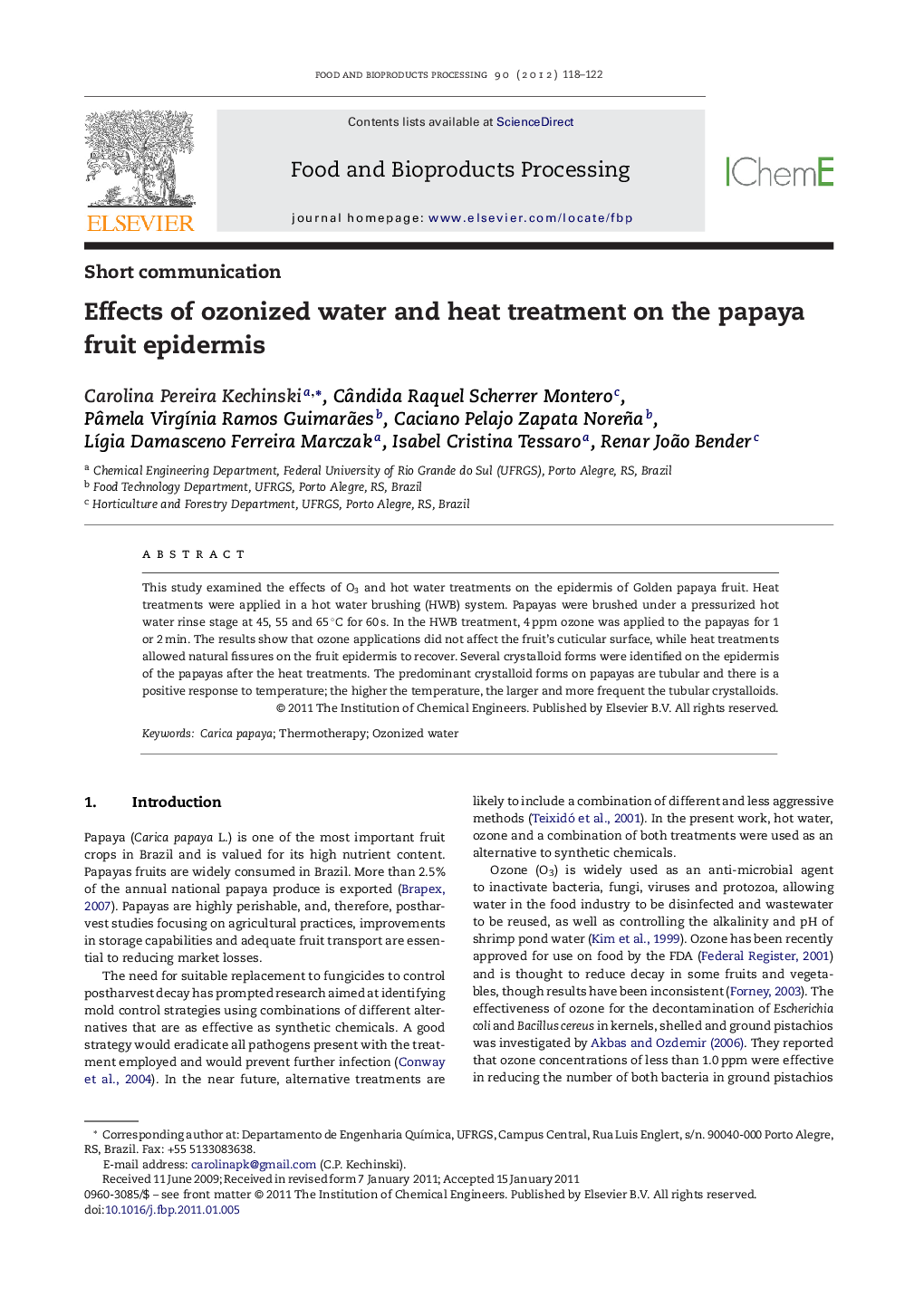| Article ID | Journal | Published Year | Pages | File Type |
|---|---|---|---|---|
| 19316 | Food and Bioproducts Processing | 2012 | 5 Pages |
This study examined the effects of O3 and hot water treatments on the epidermis of Golden papaya fruit. Heat treatments were applied in a hot water brushing (HWB) system. Papayas were brushed under a pressurized hot water rinse stage at 45, 55 and 65 °C for 60 s. In the HWB treatment, 4 ppm ozone was applied to the papayas for 1 or 2 min. The results show that ozone applications did not affect the fruit's cuticular surface, while heat treatments allowed natural fissures on the fruit epidermis to recover. Several crystalloid forms were identified on the epidermis of the papayas after the heat treatments. The predominant crystalloid forms on papayas are tubular and there is a positive response to temperature; the higher the temperature, the larger and more frequent the tubular crystalloids.
